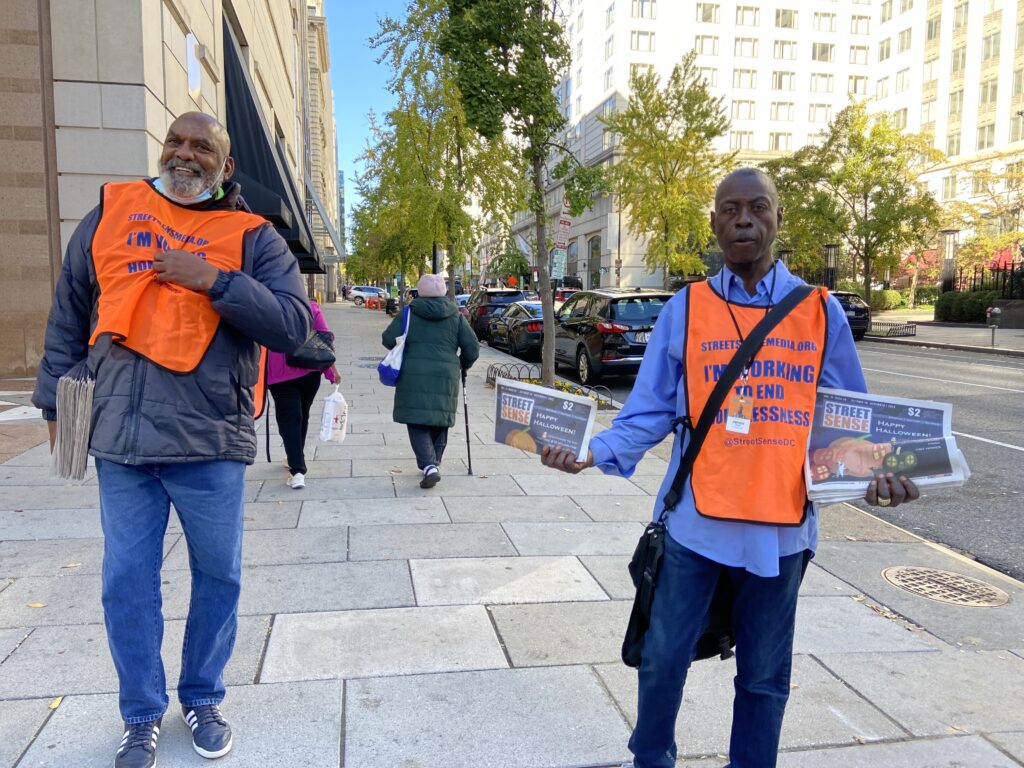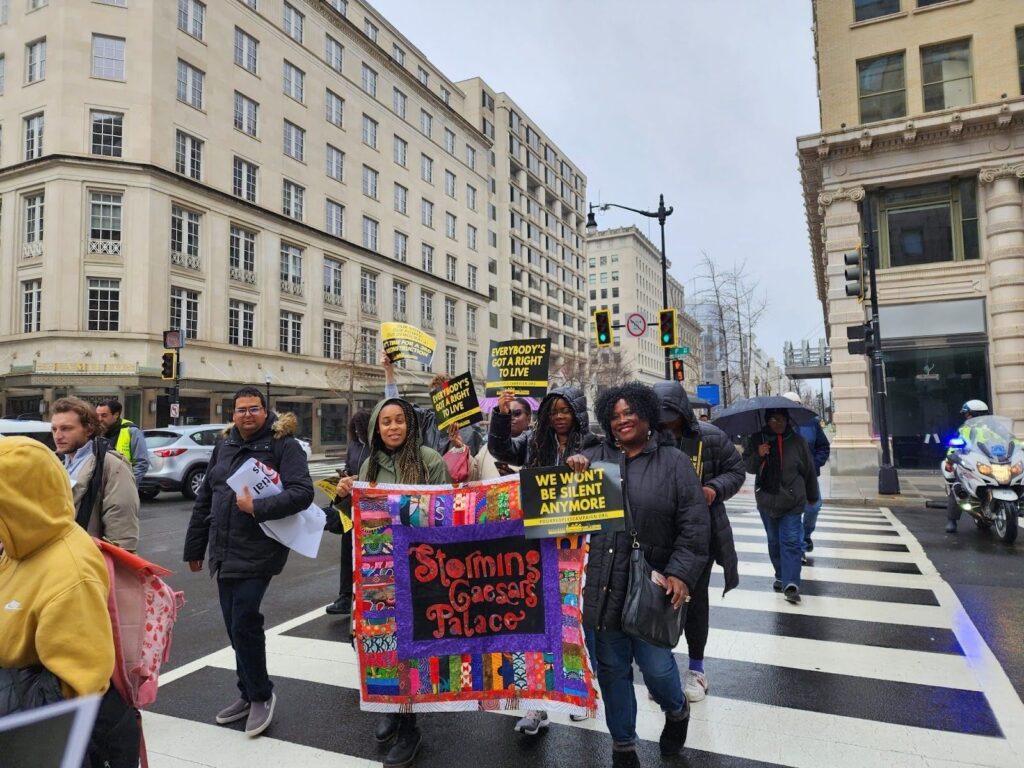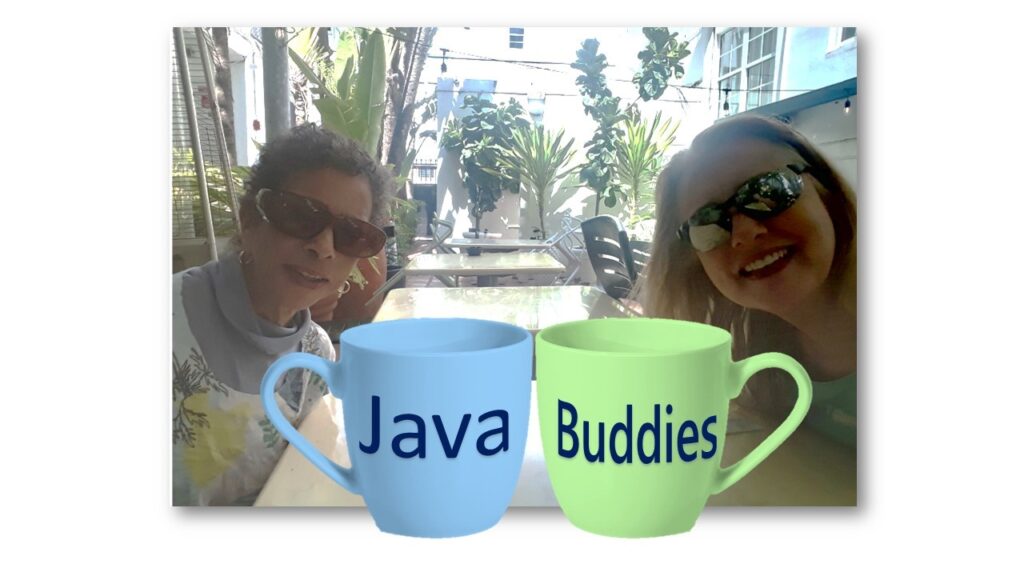In the early days, what I call “B.S.S.” or “Before Street Sense,” two college students named Laura Thompson and Ted Henson had an idea. They wanted to start a street newspaper in Washington, D.C. They began their approach by getting in touch with the late Michael Stoops at the National Coalition for the Homeless (NCH).
Mr. Stoops had the experience and the knowledge of how to start a non-profit. He was also excited by the idea of D.C. having its own street newspaper. Many other major cities in the US and Canada had their own.
The idea was for the NCH to first sponsor Street Sense until it could later break off and form its own 501(c) 3. This would happen in 2005, two years after the paper was first formed.
August Mallory was vendor number one. The vendors were given badges with their photos and vendor number. The office was first located at 1012 14th St. NW in the middle of downtown D.C. This location was a block away from the Franklin Shelter for the Homeless and Franklin Park. On any given day, there were scores of homeless men at the park, who lived on park benches with belongings they kept stored in plastic bags, crates, or suitcases.
On the same floor of that building, were the NCHA offices. Street Sense initially shared its office space with the NCH until it could find a place of its own. The first story and cover page for the paper was about an organization that was giving out toiletries, food, and free haircuts for the homeless at Franklin Park.
When I finally joined Street Sense in 2003, I ended up joining the NCH the same day. I have been with the organization ever since. In those early days, we did some investigative reporting. One of the stories was later picked up by the Wall Street Journal which really put us on the map, so to speak, in the homeless community. It also showed people in the journalism sphere how serious we should be taken as a force.
At the time, the suggested donation for the paper was $1. Vendors purchased the paper for 25 cents. The model was set up this way to help teach people entrepreneurial skills. Vendors were also encouraged to write for the paper and help with the monthly distribution.
The average vendor could make about $40 to $50 a day if they purchased around 25 papers. I usually bought around 20 papers in the morning and 20 in the afternoon and averaged around $100 or more on a given day. I had an easier time recruiting new vendors by telling them, “I can show you how to make $100 a day.” And it was true because I was actually doing it. I would recruit homeless folk in the streets and day labor places.
The day labor places hated to see me coming around their establishments because they felt like I was taking their people away from them. But the truth was, these places were exploiting their workers. Some of the workers would invest 12 hours of their day in the hopes of being called for a job, and only then, would get by on minimum wage.
Of course, many people did not think I was honest when I told them what they could expect from selling the paper, and becoming independent contractors. But people who took the chance were very grateful for this opportunity. Some of these early vendors ended up becoming our top sellers and even took on positions on our board.
At the time, vendors who were in good standing and exhibited a willingness to promote its work and help the organization grow were recommended to serve on the board for two years. Only two vendors could be selected for this period. It was a great experience for some of us and gave us valuable insight into the operations of a business and all the things that were required to sustain it.
I served on the board initially for two years. However, at the end of my term, we were on the verge of becoming our own 501 (c) 3, so I was asked to serve for another year during the transition period. I had some knowledge and insight into the business and they felt it was important that I be there to help with the transition.
Michael Stoops was on the board at the time and also served as its chairman. Robert Egger, founder and executive director of DC Central Kitchen was also on the board. There were also others on the board who had no experience in nonprofit start-ups.
We decided to have a retreat at the old O Street Mansion in Dupont Circle to hash out the details of how we would be operated as a 501 (c) 3. We had to come up with a mission statement. We also examined strategies for recruiting staff, an editor and setting up vendor training.
After we submitted all the paperwork, we became our very own nonprofit. We later relocated to the Church of the Epiphany in Metro Center. It was a cheap office space, and we began by renting our office. It was a cramped space filled with all our staff and papers. Later on, we acquired more space as we grew.
2007- 2013
During this time of organizational growth, Street Sense started to expand and geared up for adding on some limited social services.
Money was raised to hire a part-time case worker to help vendors get help with obtaining permanent supportive housing. Pathways to Housing was the medium in which those who were vulnerable and had been on the DC housing list would obtain a place in which they could call their own.
Our in-house case worker would also help vendors with anything involved with housing, immigration, social security, healthcare, food stamps, obtaining an ID, or a birth certificate
A speaker’s bureau was created with vendors who wanted to share their stories about experiencing homelessness. There was even friendly competition among the vendors garnering the top 3 vendors McDonald’s gift cards for the most papers sold in a month, There were vendors, including moi, who generally sold between 1,000 and 1,800 papers a month.
2014-2020
Street Sense continued to grow. The organization provided a variety of workshops for the vendors. There were classes for photography, film, theatre, knitting, computer skills and advocacy training. Training new vendors took place and still does today on Tuesdays and Thursdays at 2 p.m. The only requirement for new folks is to show up. You are not even required to give your legal name.
This is important because women experiencing homelessness, a lot of times were because of domestic abuse and it would make them easy to locate by a past partner, a old boyfriend or ex-husband.
By this time, we had a vendor’s lounge with computer stations and ample room where vendors can come take a break and get out of the elements. It looked as though we were on a takeover of the church. We now had an executive director’s office on the fourth floor, an editorial office, a vendor management office, and a case worker office in addition to a lounge.
The number of badged vendors would slowly climb even after the Covid-19 virus shutdown.
2020- Present
In March of 2020, the Street Sense offices shut down. There was no printed paper as the organization shifted to its online content. The government shut down in-person work and we had to shift our operations completely online from March onward. It was July before we began to print again. During that time period, vendors had to seek other means of income if Street Sense was their sole source of income. There were vendors who died of Covid-19 and others who relocated or got other part-time and full-time employment.
Being unhoused can prove to be very difficult when you are in survival mode 24/7. Imagine what it would be like if you are in that situation and your only source of income was taken away. Some solace was given when in 2022, the Cares Act provided vendors who were active during that period from March to July of 2020, with a payment of up to $3,000.
Vendors who are new as well as those who feel they need sales pointers and a way to enhance their sales can attend the ‘Beat the Streets’ training on 3 p.m. right after the training orientation.
As we look forward to the next 20 years, we can only hope that homelessness becomes a thing of the past. But as long as the economy seesaws and natural disasters like fires and medical costs rise, this doesn’t seem foreseeable. In my opinion, the lack of a universal living wage will always be a roadblock to those trying to find housing. I also predict that domestic violence will continue to be common among women who are entering the unhoused arena for the first time.
Various estimates place a $10-15 billion price tag on what it would take to end homelessness in America now, which is infinitely smaller than the US defense budget which costs taxpayers hundreds of billions each year. The money to end homelessness is there but the will of the majority needs to embrace it so that this can become a reality.








